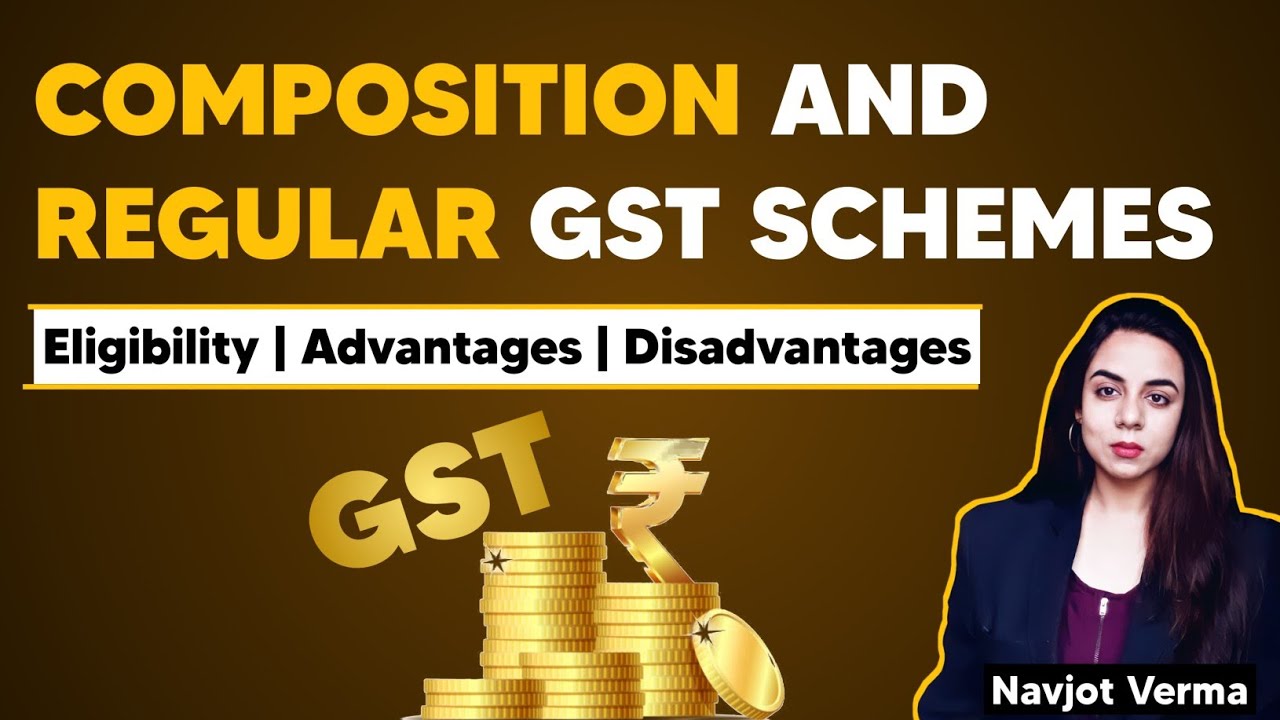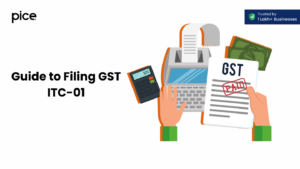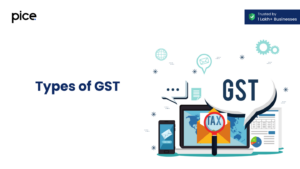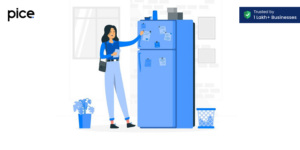What are the Key Difference Between Regular and Composition GST?
- 14 Aug 24
- 11 mins

What are the Key Difference Between Regular and Composition GST?
Key Takeaways
- GST Framework: Introduced in 2017, it includes the Regular and Composition schemes to simplify tax for businesses of different sizes.
- Regular Scheme: For businesses exceeding turnover thresholds (Rs. 40 lakhs for goods, Rs. 20 lakhs for services), it requires detailed filings and allows input tax credit (ITC).
- Composition Scheme: Targets smaller businesses (up to Rs. 1.5 crores for manufacturing and trading, Rs. 50 lakhs for services), offers simpler compliance, but no ITC.
- Differences: Regular Scheme is compliance-heavy but allows ITC; Composition is simpler but limits interstate sales and ITC.
Goods and Services Tax (GST) revolutionized the Indian tax structure by integrating a host of indirect taxes under one umbrella, simplifying tax compliance and ensuring greater transparency. Implemented on July 1, 2017, GST sought to unify the Indian market, enhance the ease of doing business, and eliminate the cascading effect of taxes.
Types of Goods and Services Tax (GST) Schemes

GST introduced different schemes to cater to various business needs and sizes, primarily the Regular GST Scheme and the Composition GST Scheme. These schemes were designed to simplify compliance and tax filing for businesses based on their aggregate turnover and business model.
Regular GST Scheme
The Regular GST Scheme is the standard tax collection scheme under GST that applies to most businesses. This scheme is mandatory for businesses with an annual turnover exceeding a specific threshold, which varies by country and, in some cases, within different states or regions of a country.
Key Features:
- Eligibility: Any business exceeding the turnover threshold limit specified for the Regular GST Scheme must register under this scheme. The threshold limit is generally higher compared to the composition scheme, which aims to encompass larger businesses.
- Tax Filing: Businesses registered under this scheme are required to file monthly or quarterly basis returns and an annual return. They need to maintain detailed records of sales, purchases, and tax paid on purchases that can be used to claim input tax credit.
- Input Tax Credit: One of the significant advantages of the Regular GST Scheme is the eligibility to claim input tax credit. This means businesses can reduce their GST liability on sales by the amount of GST paid on their purchases.
Composition GST Scheme
The Composition GST Scheme is designed for small taxpayers to simplify their tax obligations. It allows eligible businesses to pay GST at a fixed rate of their turnover, thus simplifying the tax filing process and reducing the compliance burden.
Key Features
- Eligibility: This scheme is available to businesses with an annual turnover below a specific limit, which is considerably lower than that for the Regular GST Scheme. This turnover limit varies, aiming to include small and medium-sized enterprises (SMEs).
- Simplified Tax Filing: Businesses opting for this scheme benefit from simplified tax procedures, including reduced frequency of returns. Typically, they are required to file quarterly returns instead of monthly, along with an annual return.
- No Input Tax Credit: Businesses under the Composition Scheme cannot claim input tax credit. This means they cannot deduct the tax paid on their purchases from their tax liability on sales.
GST Regular Scheme Limit in India
In India, the GST Council periodically reviews and sets the turnover limits for GST registration under the Regular Scheme. As of my last update in April 2023, the GST Regular Scheme Limits were as follows:
- For Goods: Businesses involved in the supply of goods are required to register under GST if their annual turnover exceeds Rs. 40 lakhs (Rs. 4 million). This increased limit is applicable to all states except for the special category states, where the threshold is lower.
- For Services: For businesses providing services, the threshold for compulsory registration under the GST Regular Scheme is set at Rs. 20 lakhs (Rs. 2 million) for most of India. This includes service providers, freelancers, and professionals who offer taxable supplies and services.
Special Category States
In India, certain states are designated as special category states due to their unique geographical and economic conditions. For these states, the threshold for compulsory GST registration is typically set lower than in other states. As per the latest guidelines:
- Threshold for Goods: In special category states, the threshold for compulsory registration under the GST for suppliers of goods is Rs. 20 lakhs (Rs. 2 million).
- Threshold for Services: Similarly, for service providers in special category states, the threshold remains at Rs. 20 lakhs (Rs. 2 million), aligning with the threshold for services in other states.
GST Composition Scheme Limit in India
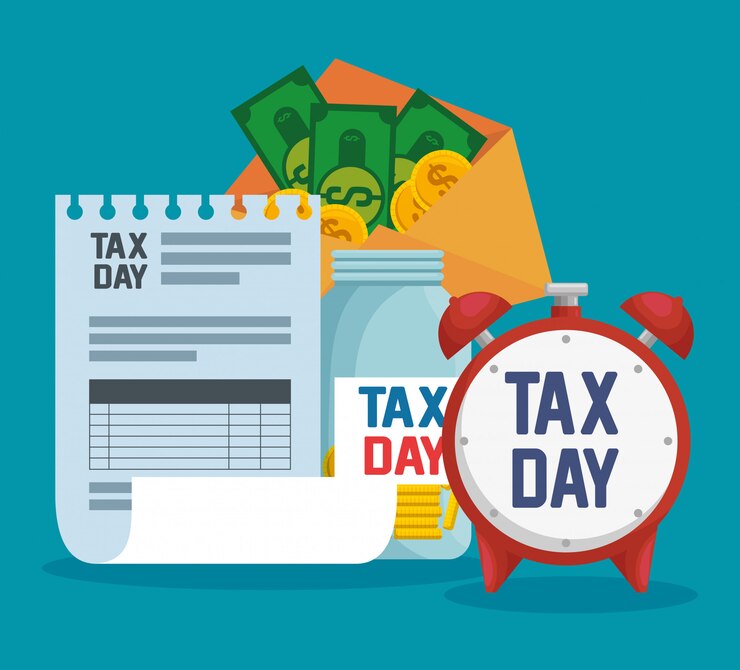
As of the latest update in April 2023, the turnover limit for eligibility under the GST Composition Scheme in India is set as follows:
- For Manufacturers and Traders: Businesses involved in manufacturing or trading of goods can opt for the GST Composition Scheme if their annual turnover in the previous financial year did not exceed Rs. 1.5 crores (Rs. 15 million). This limit allows a significant number of small and medium-sized enterprises (SMEs) to benefit from the simplified tax procedures.
- For Service Providers: The scheme was extended to service providers, including mixed suppliers (those who supply both goods and services), with a turnover limit set at Rs. 50 lakhs (Rs. 5 million) in the previous financial year. This inclusion aims to provide relief to small service providers by simplifying their tax obligations.
Special Features and Restrictions
- Fixed Rate of Tax: Businesses opting for the GST Composition Scheme need to pay tax at a nominal rate, significantly lower than the standard GST rates. The rates are typically around 1% to 5% of the turnover, depending on the type of business (manufacturing, trading, or services).
- No Input Tax Credit: One of the significant restrictions under the Composition Scheme is that the business cannot claim input tax credit. This means they cannot deduct the tax paid on their inputs from the tax liability on their sales.
- Limited to Domestic Sales: Businesses under this scheme are restricted to carrying out transactions within the state or intra-state sales only. They are not allowed to undertake inter-state sales or exports.
- No Tax Collection: Another restriction is that businesses cannot collect tax from their customers. This means the tax paid under the Composite Scheme is a cost to the business.
Key Differences Between the Regular GST Scheme and Composite GST Scheme

The primary differences lie in eligibility criteria, tax rates, compliance requirements, and the ability to claim input tax credit. The Regular Scheme is more compliance-intensive but allows for the input tax credit, whereas the Composite Scheme offers simplified compliance but at the cost of the input tax credit.
| Feature | Regular GST Scheme | Composition Scheme |
|---|---|---|
| Eligibility | Mandatory for businesses with an annual turnover exceeding Rs. 40 lakhs for goods and Rs. 20 lakhs for services. | Available for businesses with an annual turnover of up to Rs. 1.5 crores. |
| Tax Rates | Subject to standard GST rates (5%, 12%, 18%, or 28%) based on goods and services classification. | Lower, fixed rate of tax (1% to 5%), depending on the nature of the business. |
| Input Tax Credit (ITC) | Eligible to claim ITC, allowing for the deduction of tax paid on inputs from the tax payable on sales. | Not eligible to claim ITC, which can lead to higher operational costs if significant inputs are required. |
| Compliance Requirements | Detailed record-keeping, monthly or quarterly returns, and an annual return. | Simplified compliance with quarterly returns and an annual return, reducing the compliance burden. |
| Business Operations | There are no restrictions on interstate sales, e-commerce transactions, or the type of goods and services sold. | Restrictions include no interstate sales, no e-commerce sales, and limitations on the type of goods and services sold. |
| Suitability | Suited for businesses with high volume transactions, engaging in interstate sales, or benefiting from ITC. | It is best for SMEs operating within a single state with limited turnover looking to reduce compliance costs and simplify tax filings. |
Choosing Between the Schemes
The decision between the Regular and Composition GST schemes should align with your business model, operational needs, and long-term objectives. It's also important to periodically review your choice as your business evolves.
The GST framework allows for a transition between schemes under certain conditions, so businesses can switch schemes if their situation changes, ensuring they always operate under the most beneficial arrangement.
Annual Turnover
- Regular GST Scheme: If your business has a high annual turnover that exceeds the threshold limit for the Composition Scheme (typically Rs. 1.5 crores in India), you must opt for the Regular GST Scheme.
- Composition Scheme: Ideal for small businesses with a turnover below the specified limit seeking to simplify their GST compliance and reduce the frequency of tax filings.
Input Tax Credit
- Regular GST Scheme: Choose this if your business frequently purchases taxable goods and services for production or resale. The ability to claim Input Tax Credit (ITC) can significantly reduce your net GST liability.
- Composition Scheme: If ITC is not a significant factor for your business—either because you have minimal GST on purchases or because your operations are mostly service-oriented with less input tax—this scheme could be more advantageous.
Interstate Sales and E-commerce Operations
- Regular GST Scheme: Required if your business involves interstate sales, exports, or supplies through e-commerce platforms. The Composition Scheme restricts these activities.
- Composition Scheme: Suitable for businesses operating within their home state, with local sales only.
Compliance Burden
- Regular GST Scheme: If your business can manage the compliance requirements, including monthly filings and maintaining detailed transaction records, this scheme offers more flexibility and benefits.
- Composition Scheme: opt for this scheme if simplifying compliance, reducing paperwork, and minimizing filing obligations are priorities for your business.
Business Growth and Expansion Plans
- Regular GST Scheme: Ideal for businesses planning to expand beyond their state or explore e-commerce channels. It offers the flexibility needed for growth and diversification.
- Composition Scheme: Best for businesses content with operating at a smaller scale or those aiming for steady-state operations without immediate expansion plans.
Conclusion
Knowing the intricacies of the Regular and Composition GST schemes is crucial for businesses to comply effectively and optimize their tax liabilities. Choosing the right scheme can significantly impact the financial health and compliance burden of a business.
💡To understand how Pice can specifically aid your business in GST payments. Download now.







